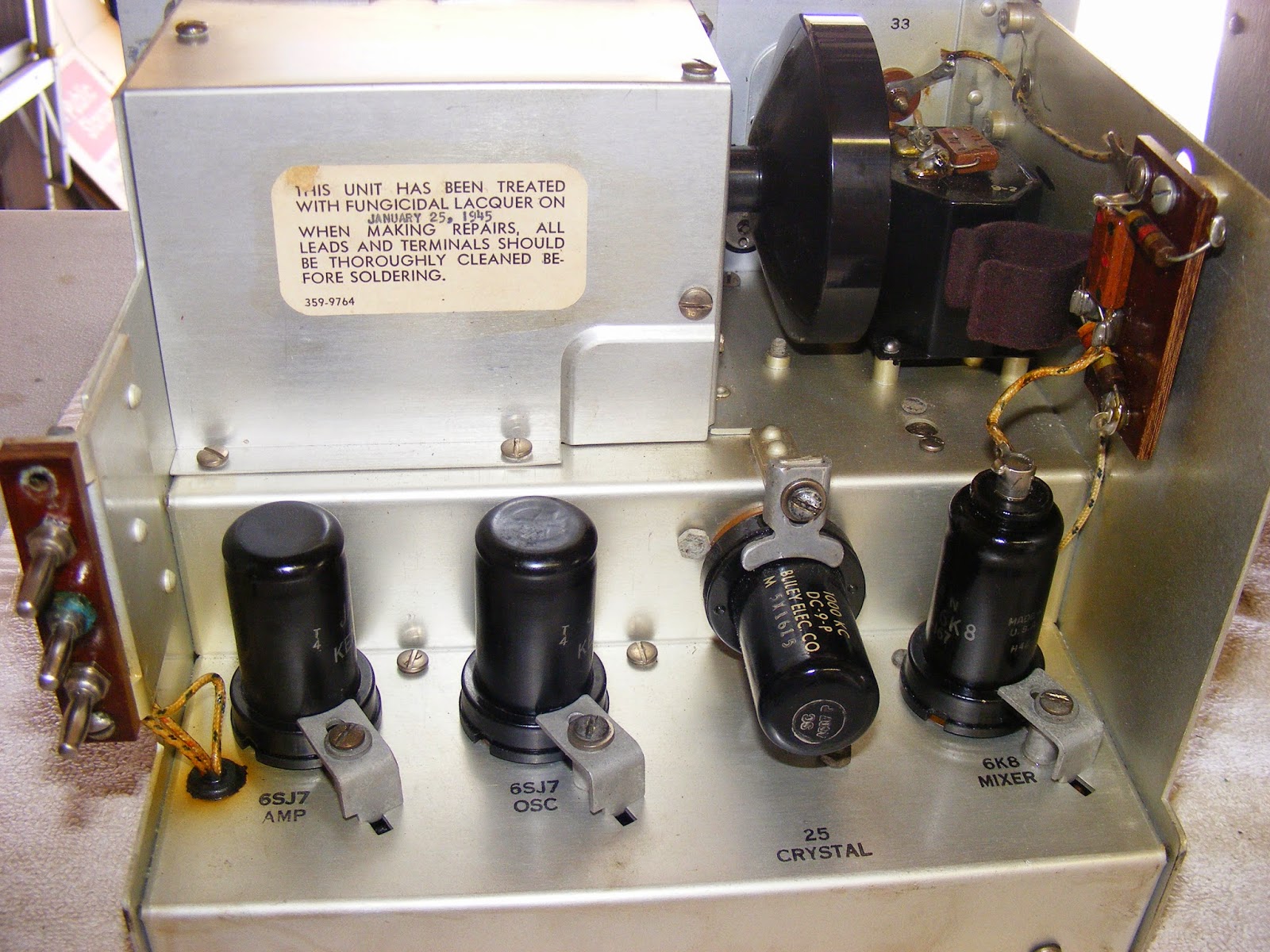 ..finally, I escaped! Man, it has been a long time and a bounty of distractions and "real time projects" have assailed me, precluding updates here. But, after clearing away a bunch of tangential time-wasters, I wandered down an unknown road only to fall in love with one of the more ancient beauties in the world of Electronicus Militaria. It was kind of like being transported back in time and stumbling across Princess Nefertiti in some Egyptian disco called the Pyramid Room, or some such. No question, the iconic bust puts her out there as one striking piece of femininity. But, as usual, I prattle.
..finally, I escaped! Man, it has been a long time and a bounty of distractions and "real time projects" have assailed me, precluding updates here. But, after clearing away a bunch of tangential time-wasters, I wandered down an unknown road only to fall in love with one of the more ancient beauties in the world of Electronicus Militaria. It was kind of like being transported back in time and stumbling across Princess Nefertiti in some Egyptian disco called the Pyramid Room, or some such. No question, the iconic bust puts her out there as one striking piece of femininity. But, as usual, I prattle.The beauty I am referring to now, is the venerable frequency meter, model BC-221 or SCR-211 -- which you have seen at numerous swap meets or other places where cheap hams congregate. Anyway, a long time ago, my dad had secured one and for several instances when I visited him, he sang its praises and regaled me in the tales of his restoration efforts -- down to the AC/DC power supply he fabricated.
 |
| N6ABV's power supply sans 0A2 regulator |
Among the treasures, was this graceful old BC-221 (I cannot remember the make or manufacturer) that still did not resonate with me. To be sure, it was clean and functioning, I guess, but I had a signal generator and more than enough frequency counters, so what did I need with one of these, right? Sadly it was dealt off to someone somewhere. But for some reason, I kept his power supply.
Well, bored to tears and browsing eBay, I came upon an offering from a gentleman Orange, California for-a-brand-new-in-the-box TS 323 which was the Navy's version of this type of instrument designed for 20 Mc through 450 Mc. (It does not seem right to use modern day frequency units with these old fellas, so I won't.) Naturally, I could not let this slide so I forked over $120 and, since the guy was in Orange, it was a hop, skip, and a jump to hand him 6 double sawbucks and cart it home.
 |
| Here's what it must be like to be caught in a time warp: brand new in the fifties, baby! |
Sadly, I was on the slippery slope and it was only a matter of time before my friend in Orange had the lower range BC-221 (125 Kc though 20 Mc.) available. I think I got this for $50 or so and, while the inside was immaculate, I had to do some restoration on it. This, of course, was the BC-221-AK, manufactured by Philco for the military. The cabinet was wood and a little weather-beaten but the unit came with its original canvas flaps so the sprucing up consisted of washing and "oiling" the paint, removing the hardware and painting it either an olive drab workalike (the handle and the canvas retaining strips) or flat black (the latches). The bottom was a wreck, so I sanded it out and repainted it with the lighter shade of O.D. because it wouldn't show much. It came out beautifully as you can see from the pictures below.
 |
| Note the fungicidal warning -- issued two months before I was born! |
 |
| Response to Dr Jones, "..[they're] being looked after by..top men.." |
..and, soon thereafter, I was visiting the monthly Chino Hills swap meet and, of course, stumbled upon an "-F" unit (BC-221-F made by Zenith) in a little poorer condition, but good nonetheless. I restored the outer aluminum case by sanding down a wretched, pitted wrinkle finish and painting it flat black. (Hey, you restore these your way, and I'll restore these my way.)
Inasmuch as I got tired of 'documentation snaps", this went straight to the bench to revive and calibrate. But the case came out pretty good and I'll get some pics up when I revisit the revival of this unit. But these are good enough for now.
To sum up this post, the BC-221s one finds, if one looks hard enough, can be treasures and diamonds in the rough if cared for properly. However, one stumbles on some quirks and electronic restoration problems occasionally. That's what the next couple of posts will be about.
Mean time, I gotta buy Cleo a Tom Collins. Be back soon!














































